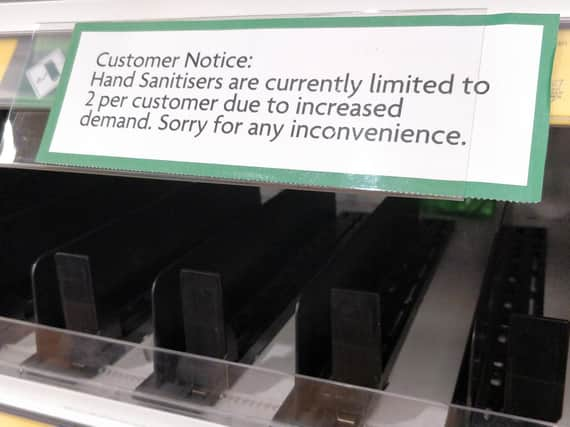Leeds and Bradford were the biggest panic buyers in the UK, according to data


Card transactions data for the end of March show grocery sales rose more in Leeds and Bradford than anywhere else in the UK.
Leeds had the biggest rise compared with the previous year of any place in the UK, jumping 54 per cent, and Bradford was in joint second place, with 45 per cent more grocery sales.
Advertisement
Hide AdAdvertisement
Hide AdThe Yorkshire economy has suffered dramatically due to coronavirus, with the region having some of the UK’s most badly impacted places.
Sales across Yorkshire have plunged by as much as 80 per cent in some parts of the region as tourism is non-existent and local services have mostly closed.
Of a total 172 small and large areas measured in the UK, Whitby has seen the fourth biggest drop in non-grocery sales with an 80 per cent fall and Bridlington was joint-fifth in the UK with a drop of 79 per cent.
York also featured prominently in the rankings, losing 75 per cent of non-grocery sales, according to data from high street banks gathered by charity the Impact Information Company and analysed by Tortoise.
Advertisement
Hide AdAdvertisement
Hide AdThe city’s economy is reliant on both tourism and education, which means it was hit twice by lockdown measures which closed almost the entire hospitality industry in the UK and all universities.
Kirsten Mulcahy, head of the social economy data lab at Social Investment Business said: said the fact that Leeds has a higher proportion of car drivers than other major cities could explain why grocery sales rose so much, as Leeds households were more likely to be able to fill up a car with shopping and less likely to be on foot or on public transport.
She added: “There could be a number of factors at play here. Leeds has a higher proportion of young people than most cities and young people are more likely to switch to online sales.”
The data also showed that areas with declining high streets were much more likely to see a bigger fall in sales.
Advertisement
Hide AdAdvertisement
Hide AdSkipton was one place that showed big falls in high street spending, with five years’ worth of damage done during the epidemic.
Ms Mulcahy said there would need to be a conscious effort after lockdown to ensure businesses reopen and people visit their local town centres once again.
She said: “We’re seeing shocks at the moment but we need to be looking at what the effect might be three months down the line. Areas like Craven may not have the purchasing power to bring themselves out of it.”
This comes after research from the Centre for Towns showed coastal towns have been worst-affected by the Government coronavirus lockdown and will need extra support because they lack the resilience to recover.
Advertisement
Hide AdAdvertisement
Hide AdThe think tank said new measures on top of those already announced will be needed to avoid the "initial shock" of the last month's lockdown from "turning into permanent damage".
And it lists the Yorkshire towns of Whitby and Ilkley as among those with the highest proportion of people employed in the worst-hit sectors of the economy.
The two towns have more people working in pubs or restaurants than anywhere else in the country, with 28.5 per cent of the workforce in Ilkley and 22.9 per cent in Whitby working in the shut-down sector.
Comment Guidelines
National World encourages reader discussion on our stories. User feedback, insights and back-and-forth exchanges add a rich layer of context to reporting. Please review our Community Guidelines before commenting.